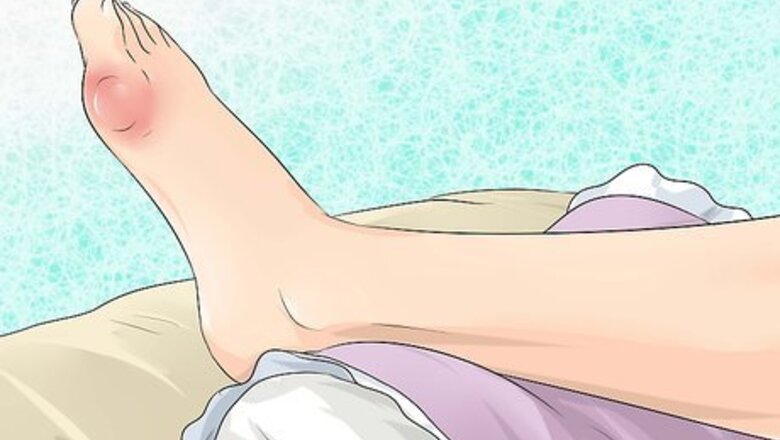
views
X
Expert Source
Siddharth Tambar, MDBoard Certified Rheumatologist
Expert Interview. 25 August 2020.
[2]
X
Trustworthy Source
American Academy of Family Physicians
Organization devoted to improving the health of patients, families, and communities
Go to source
The most effective way to treat gout is using medications recommended by your doctor, but you can complement that with home treatments to manage the pain and lifestyle changes to lessen the chances of future attacks.[3]
X
Trustworthy Source
Mayo Clinic
Educational website from one of the world's leading hospitals
Go to source
Treating the Pain at Home

Elevate the swollen joint. This will help increase circulation and drainage. If your foot is affected, lie in bed and prop it up above your body on a pile of pillows. If it is very sore, it may be too painful to even have a sheet over it.
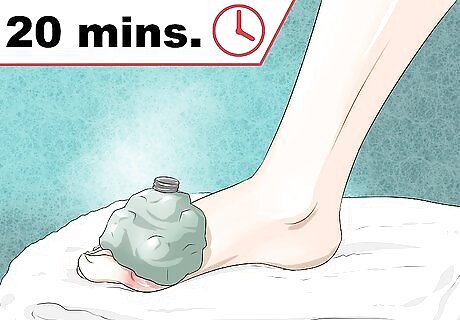
Soothe the joint by applying ice. This will help reduce inflammation and take the edge off the pain. Apply ice for 20 minutes and then give your skin time to warm up. This will prevent the cold from damaging your skin. If you do not have ice available, you can use a package of frozen peas or corn. Always wrap the ice or frozen vegetables in a thin towel so the ice isn’t applied directly onto your skin.
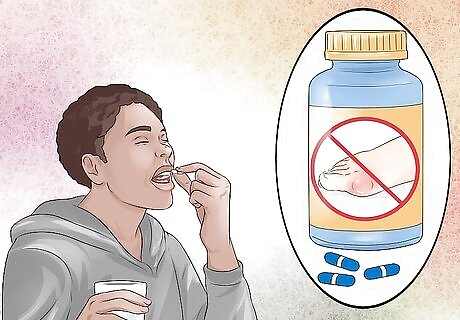
Try over-the-counter nonsteroidal anti-inflammatory drugs. These drugs may help reduce the inflammation and pain. Take them immediately during the attack and for two days afterwards. Possible medications include ibuprofen (Advil, Motrin IB) and naproxen sodium (Aleve). These medications are not recommended for people with stomach ulcers or bleeding, kidney problems, or blood pressure conditions. Don’t take aspirin. It can increase your uric acid levels. If you are currently on other medications, consult your doctor to avoid any possible interaction effects.
Reducing Gout Attacks with Lifestyle Changes
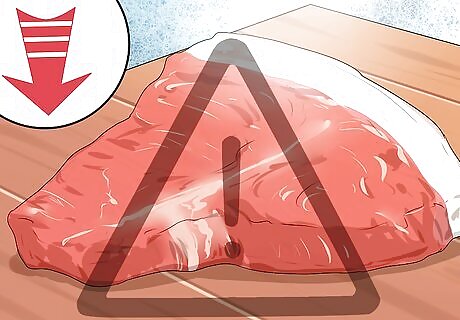
Make dietary changes to lower your intake of purines. When you digest purines, your body produces uric acid which can build up into urate crystals in your joints. By reducing the amount of purines in your diet you lower the amount of purines your body must process. Eat less red meat like steaks. Don’t eat gamey meats like rabbit, pheasant, and venison. Avoid organ meats like liver, kidneys, heart, and sweetbreads. Reduce your seafood intake, especially caviar and shellfish like mussels, crab and shrimp. You should also steer clear of oily fish like sardines, anchovies, mackerel, sprats, whitebait, herring, and trout. Yeast and meat extracts are also high in purines. This includes marmite, bovril, and many commercially manufactured gravies. Low-fat dairy products may decrease your risk of gout attacks.
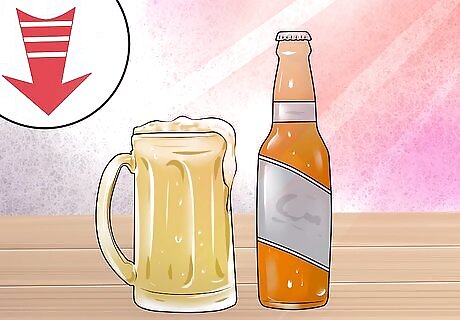
Drink less alcohol. Alcohol, especially beer and spirits, is high in purines. An occasional glass of wine is ok and may even be beneficial. Binge drinking can provoke a gout attack.
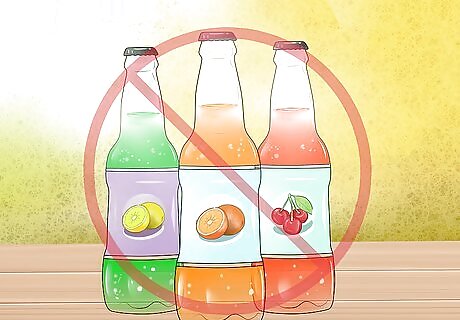
Avoid sugary drinks that have been sweetened with fructose. These drinks can aggravate gout. Drinks flavored with cherry extract are an exception, as long as they aren’t artificially flavored and packed with other sugars. Cherries and cherry extract may help lower your levels of uric acid.
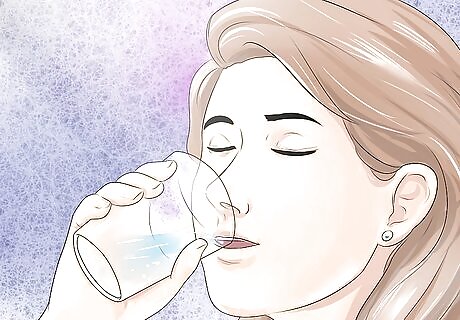
Drink lots of water to promote healthy kidney function. Your kidneys are crucial for producing urine and getting rid of uric acid through your urine. The amount of water you need will vary depending on your body size, activity levels, and the climate you live in. But you should drink at least eight glasses per day. Once you are thirsty, you are already dehydrated and should drink quickly. If you urine infrequently and pass dark or cloudy urine, those are signs that you may be dehydrated.
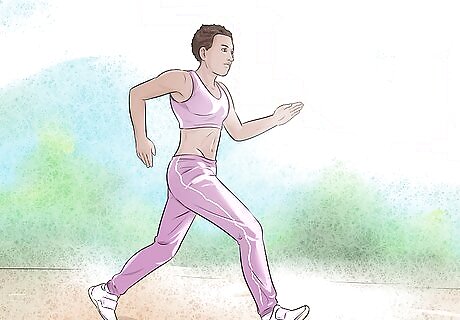
Exercise regularly. This will improve your health overall and make you feel good. Aim for about 30 minutes of moderate exercise, like walking, or 15 minutes of more strenuous exercise, like running, five days a week. Swimming is a great way to get exercise without putting stress on joints that might be hurting.
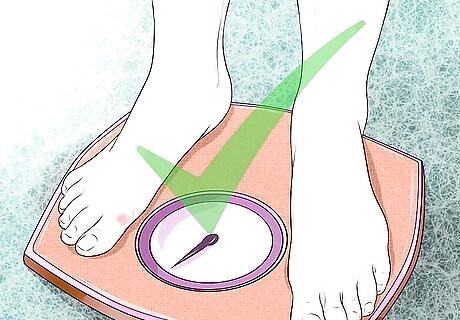
Lose weight if you are overweight. However, it is important to follow a healthy, sustainable dieting plan. Using crash diets that aim to make people lose lots of weight quickly are often high in protein and low in carbohydrates. These diets are likely to be high in purines and may aggravate your gout.
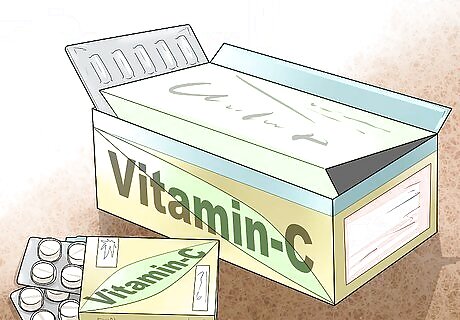
Try vitamin C supplements. Vitamin C helps uric acid be excreted through your kidneys into your urine, and may be protective against gout. Talk to your doctor before adding supplements to make sure it is right for you. Vitamin C only reduces uric acid a little bit, so while it may help prevent new attacks, it is unlikely to be a cure.

Drink coffee. Both caffeinated and decaf coffee may help reduce uric acid levels. However, this evidence is tenuous because studies have not been able to identify how this might be occurring.
Knowing When to See a Doctor
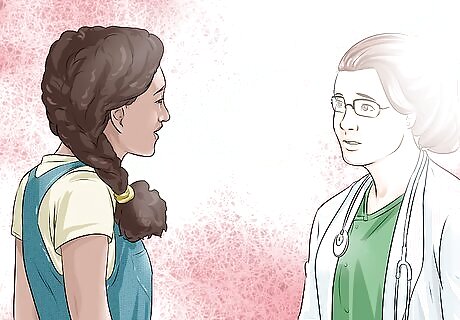
Go to a doctor if this is your first attack. Gout can damage joints and it is best to begin treatment as soon as possible. This will also help reduce your pain as quickly as possible. Symptoms may include severe pain, inflammation, and redness in the affected joint for several hours and less severe pain lasting for days or weeks afterwards. The hand and foot joints are affected most often. While gout can be managed with lifestyle changes, treatment usually requires medications. See a doctor immediately if your gout attack is associated with a fever or if the joint is hot. These symptoms may indicate that you have an infection that needs quick attention.
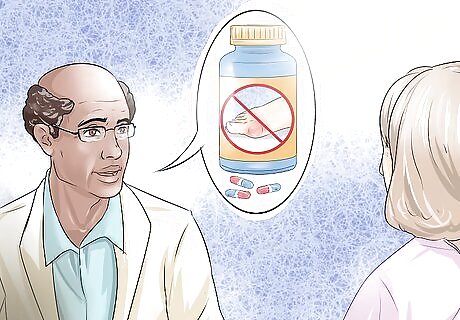
Discuss the different medications available to treat gout. Your doctor will help you come up with a treatment plan that is tailored to your needs and your medical history. Your doctor may prescribe: Nonsteroidal anti-inflammatory drugs. If over-the-counter drugs were ineffective and managing your pain, the doctor can describe something stronger. Colchicine. This drug decreases the inflammatory reaction of the joint lining in response to the crystals. Corticosteroids. These medications may be given as an injection directly into the joint for fast relief and may be especially helpful for those who cannot tolerate NSAIDs. However, these corticosteroids can’t be taken long-term. If you have a history of gout, your doctor may prescribe medications to reduce your uric levels by either reducing the amount of uric acid your body produces or by increasing the amount that your body excretes.
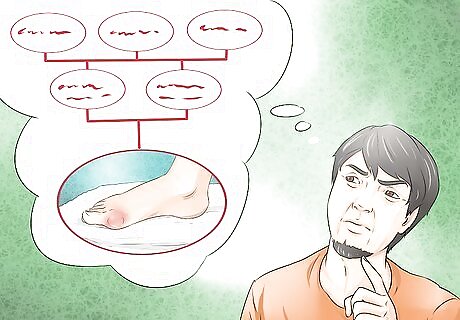
Factor in your risk for future attacks when deciding a course of action. Some people are more prone to gout than others. Factors that raise someone’s risk include: A diet with lots of meat, seafood, sweet drinks, and beer. Being overweight. High blood pressure, diabetes, metabolic conditions, heart or kidney disease. Taking certain medications against hypertension, anti-rejection drugs after a transplant, or aspirin. A family history of gout. Having undergone surgery or sustaining an injury. Men are more likely than women to have gout, though women’s risks increase after menopause.




















Comments
0 comment